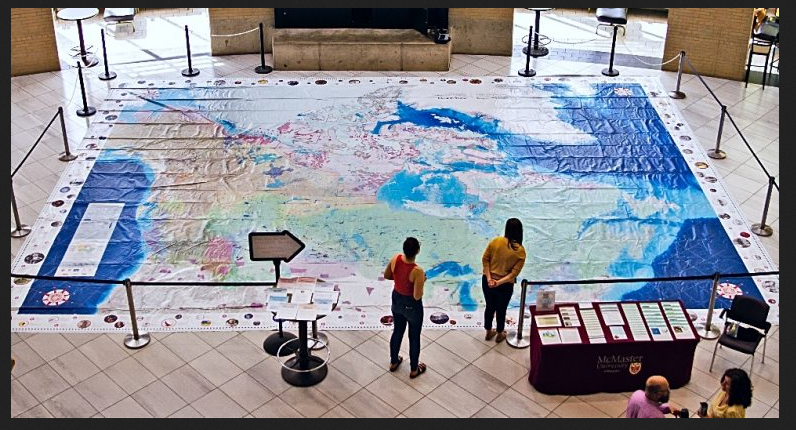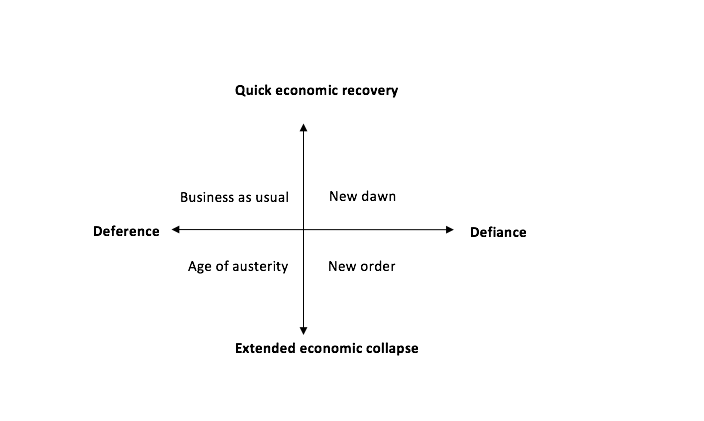
Monthly Archives: January 2021
But I thought I had the moral high ground?
Using AI to Predict Future AI

Having an interesting conversation yesterday about whether you could use AI to predict future developments in AI. The answer is almost certainty yes. We’ve already got self-writing software, 3D printers that print 3D printers and we are on the cusp of automated scientific discovery. One rather wonders where this would leave humans?
Best Ever Interview Questions

I’ve just been asked by a friend what question he might ask in an interview. A few days earlier i was asked the kinds of question someone might be asked in an interview at Oxbridge. Here are a few shots for both situations (probably less so for the job interview, but I like the idea of turning the tables and interviewing them).
- Do you think you are smart?
- What’s the worst question I could ask you?
- What failure are you most proud of?
- What’s more important; intelligence, ambition or luck?
- What are you good at?
- What are you curious about?
- What have you been wrong about?
- What are the limits to your compassion?
- What do you regret the most?
- What is influence?
- What is courage?
- What is the purpose of life?
- What is the purpose of death?
- How is your reality different to mine?
- What would you remove from a burning house?
- If you met an alien what’s the first question you would ask?
- What did you learn last year?
- What are you sure about?
- What are you unsure about?
- Tell me what I’m wrong about.
2021 Trends?
Now that’s what I call a map
Entreprenerial Mind Map
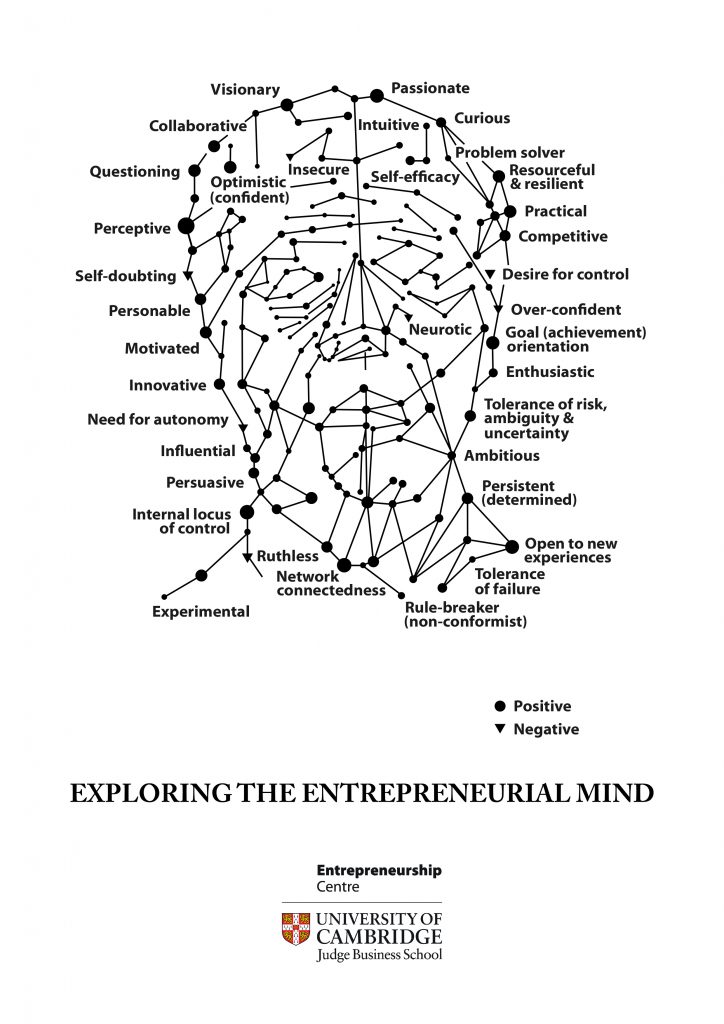
This one has been a while coming. It’s a visual exploration of some of the traits and states associated with an entreprenerial mind. Obviously not everyone will possess all of these traits or states and neither are they static – these will change over time too as a start-up grows and new people join the business. Perhaps a question is which states work best throughout an organisations lifecycle?
Bibliography:
Peta Levi, ‘Flourishing in the Cambridge parkland’, Financial Times, November 1980
Segal Quince Wicksteed, The Cambridge Phenomenon: The Growth of High Technology Industry in a University Town, 1985
Lyle M. and Signe M. Spencer, Competence at work: models for superior performance (Chapter 17, Entrepreneurs), John Wiley & Sons, Inc., 1993
Sally Caird, What do psychological tests suggest about entrepreneurs? Journal of Managerial Psychology, 8(6) pp. 11–20, 1993
Tom Byers (Stanford), Heleen Kist (Stanford) and Robert I. Sutton (Hass), Characteristics of the Entrepreneur: Social Creatures, Not Solo Heroes, Handbook of Technology Management, Richard C. Dorf (Ed), CRC Press, October 1997
Yin M. Myint, Shailendra Vyakarnam and Mary J. New, The effect of social capital in new venture creation: the Cambridge high‐technology cluster, John Wiley & Sons, June 2005
S Kavadias, SC Sommer, The effects of problem structure and team diversity on brainstorming effectiveness, Management Science, 2009
T Miller, M Grimes, J McMullen and T Vogus, Venturing for others with heart and head: How compassion encourages social entrepreneurship, Academy of Management Review 37 (4), 616-640, 2012
J Hutchison‐Krupat, RO Chao, Tolerance for failure and incentives for collaborative innovation, Production and Operations Management, 2014
The Cambridge Phenomenon: 50 Years of Innovation and Enterprise, Kate Kirk and Charles Cotton, Third Millennium, 2012
M. Frese & M. M. Gielnik, The psychology of entrepreneurship. Annual Review of Organizational Psychology and Organizational Behavior, 1, 413–438, 2014
M. J. Gorgievski & U. Stephan, Advancing the Psychology of Entrepreneurship: A Review of the Psychological Literature and an Introduction. Applied Psychology, 65(3), 437–468, 2016
Lynda Applegate, Janet Kraus, and Timothy Butler, Skills and Behaviors that Make Entrepreneurs Successful, HBR Working Knowledge, June 2016
Dean A. Shepherd and Holger Patzelt, Entrepreneurial Cognition: Exploring the Mindset of Entrepreneurs, Palgrave Macmillan, 2018
Nicos Nicolaou, Phillip H. Phan and Ute Stephan, The Biological Perspective in Entrepreneurship Research, Entrepreneurship Theory and Practice, November 2020
Early roughs…

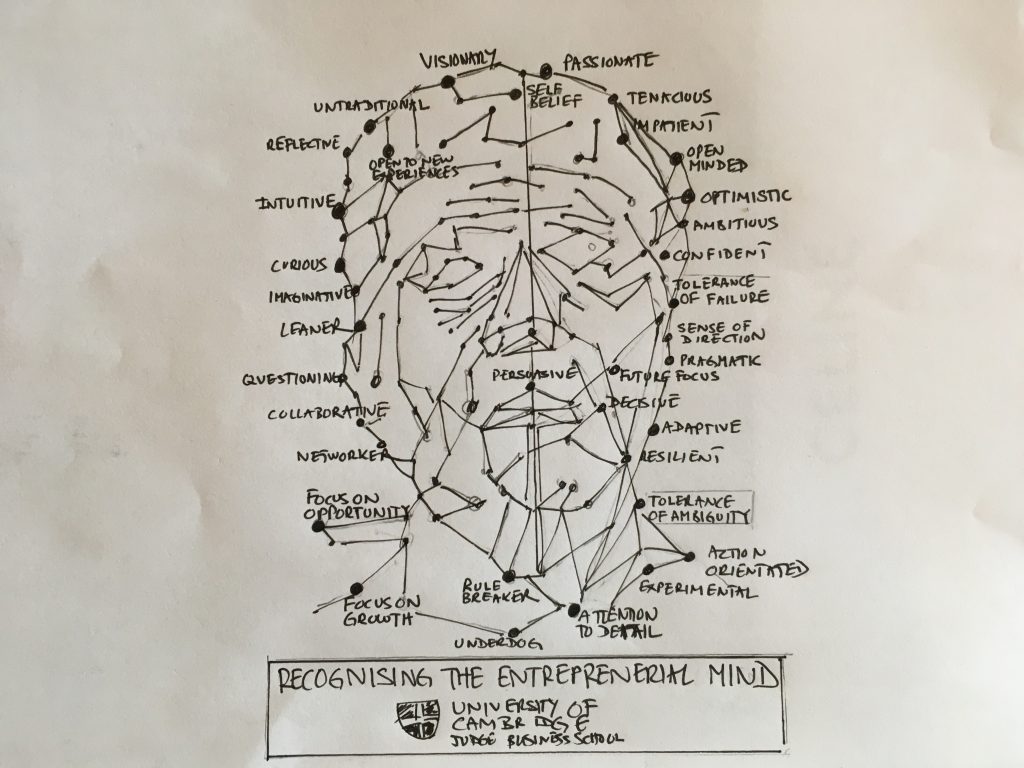
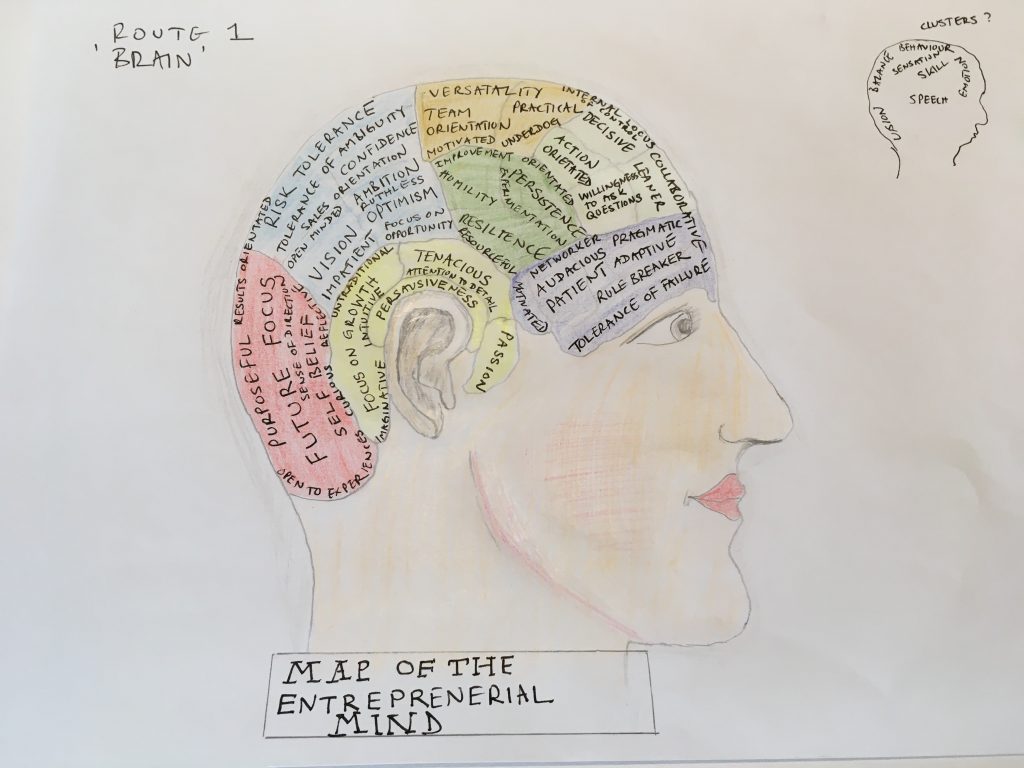

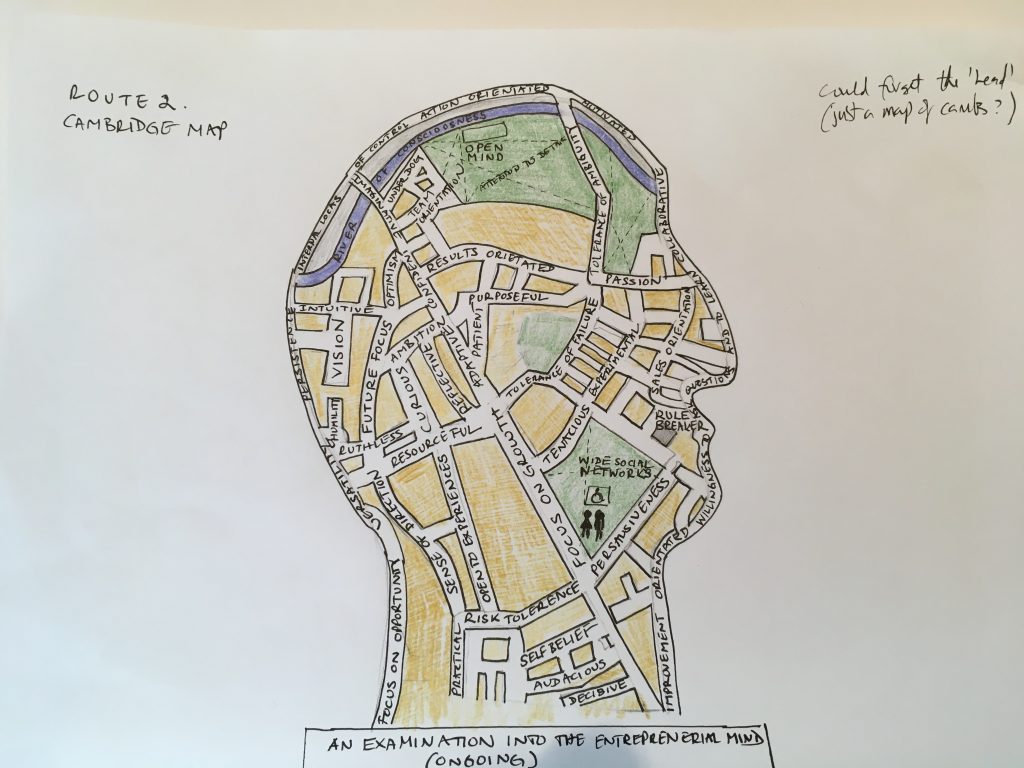
10 reasons why things are better than many people think

Many people think that the world is getting worse. But many people are wrong. Yes, there’s Climate Change, the threat from nuclear, chemical and biological weapons, terrorism, rogue asteroids, super-volcanos, anti-biotic resistance, solar flares, future pandemics, AI and perhaps robot uprisings to worry about. Granted, 2020 was a terrible year, and 2021 isn’t looking much better at the moment either, but things will improve. Overall, life is getting better, not worse. Here are ten good reasons not to worry and to be happy.
1. Life expectancy
During the first industrial revolution, people in Europe generally died before they were 40 years old. Many died before they were 35. Now the average is almost twice that at around 70 rising to 80+ in some nations. And women don’t routinely die during childbirth these days either. Yes, you are going to die one day. But every other day you will not.
2. Infant mortality
100 years ago, childbirth was a hugely risky undertaking. Even if the mother made it through unharmed, around 10% of infants, even in relatively wealthy countries such as the UK and US, didn’t. Even 50 years ago, 2 in 3 parents had a child die before its 5th birthday.
3. Income inequality and poverty
There is still much work to be done with regard to inequality, especially inequality within countries, but the trend is most definitely in the right direction. Thanks to extraordinary economic gains, especially in China and India, about half the world can now be described as having middle-class living standards. At a UN Summit in 2000, countries around the world pledged to halve extreme poverty by 2015. The goal was achieved 5-years ahead of schedule, in 2010.
4. Democracy.
OK, there are worrying signs, not only in China and Russia, but in countries such as Hungary and Poland too. Nevertheless, throughout most of human history most people lived under oppressive, authoritarian, non-democratic control. Now the figure is around 50% (with 90% of those still under authoritarian control living in China). This figure has been on an upward trend since the mid-1970s.
5. The world is a safer place
At least two of the world’s superpowers have been at war with each other at least 50% of the time since the year 1500. The early and middle parts of the 20th Century were especially nasty in terms of conflict, but since then a more stable international order has emerged. With the possible exception of the former Yugoslavia, there hasn’t been a war in Europe for three generations and while countries constantly bicker with each other, they rarely fight, at least in the conventional sense. Even in gun-obsessed America, homicide rates have dropped precipitously versus a few decades ago (just compare New York City now with the 1970s). But it’s not just wars and murder. Over the last 100-years or so, it’s become 96% safer to travel in a car, 99% safer to get on-board an aeroplane, 95% safer to go to work and it’s 89% less likely that you will be the victim of a natural disaster.
6. Clean water, clean energy and cleaner air
Too many people in the world still don’t have access to clean water or proper sanitation, but around 300,000 people per day do gain access to clean water with a further 325,000 per day gaining electrical power for the first time. Meanwhile, clean energy is getting cheaper, more cost-effective and more popular. Oh, and remember Ozone depletion? A study in 2005 revealed that Ozone depletion, which the world was very worried about 20 years ago, was slowing down. By 2018, the ozone layer had started to heal. We did that. Air quality remains an issue, especially in eastern mega-cities, but air pollutant concentrations and emissions have fallen significantly since 1970. The combined emissions of six criteria pollutants monitored by the Environmental Protection Agency in the US have fallen by 71% over this period. Toxic air releases meanwhile are down 56%, lead concentrations are down 99% and carbon monoxide levels are down 77% since 1990.
7. Medical marvels
Yes obesity (a largely self-inflicted condition) is a huge problem, and it’s getting bigger, but the number of people being disfigured by leprosy or blinded by trachoma has declined significantly. Since 1990, the lives of over 100 million children have been saved by vaccinations alongside other simple measures ranging from proper breast feeding to effective diarrhoea treatment. We’ve more or less eradicated measles, mumps, rubella, lymphatic filariasis, guinea worm, river worm (onchocerciasis) and smallpox. We’ve also come close to eradicating Polio (down 99% since 1988), while HIV/AIDS infections have fallen globally by 35% since 2000 while deaths have declined by 42% since 2006. Meanwhile, between 2000 and 2015 we halved the global death rate for Malaria. This disease, which used to kill around 2 million people each and every year, is on the way to extinction, partly due to the investment of time and money from the Gates Foundation (Not all rich people waste money on superyachts or move to Monaco to avoid tax).
8. Literacy
A recently as 1960, the majority of human beings were illiterate and lived in abject squalor. Now as few as 15% remain illiterate (and only 10% live in extreme poverty). In another 10-20 years, both of these deprivations could be a distant memory. The global ratio of male to female literacy has improved too, moving from 59% in 1970 to 99% in 2010.
9. Women in education and employment
The number of women (aged 16-64) in employment in the UK stands at around 76%. Back in 1971 this figure was 52%. The Economist magazine had even equated the economic impact of increased female participation in the global workforce with the economic impact of the internet. There are many more women in education too and globally, between 1980 and 2008, the gender gap narrowed from 32% to 26%. Gender barriers remain, but the world is moving in the right direction.
(Don’t forget that throughout most of recorded history, women were more or less regarded as property owned by fathers or husbands and did not even have the right to buy a house or vote).
10. Sex, race and tolerance
Cast your mind (or dusty text books) back to the US in 1950. A paragon of development and progress, which Winston Churchill described as standing “at the summit of the world”, North America still had racial segregation, McCarthyism and polio, interracial marriage was illegal and so too were gay sex and birth control. There was also anxiety about total nuclear annihilation (still present, but now far less probable). It seems that we’ve always had something to worry about.
I will end with some wise words from a fellow futurist named Jamais Caiso, whom I met many years ago. I hope he won’t mind me using this.
“Things start with a global economic downturn, one lasting much longer than anyone expects. We slowly come out of this, and see an explosion of new technological developments; but in concert with that, more economic instability. Regional conflicts grow and there is an almost accidental war, which escalates to the point of fighting all over the world. Chemical weapons get used.
Just as the war ends, we see the rise of a global pandemic. The combination of conflict and disease leads to what some call a “lost generation”, millions of people die. We finally see an economic boom though, and for parts of the world this becomes a glorious time. It doesn’t last, of course; an economic collapse even greater than the one a few decades earlier takes hold, driving inflation in some countries, mass unemployment in others. Governments fall, and totalitarian regimes take over, some using ethnic cleansing as a rallying cry. This inevitably leads to another global conflict, even greater than the last, which ends in a shocking nuclear attack. I’ve just described 1895 to 1945.”
He ends: “This is why I am, ultimately, hopeful about our future. We have lived through terrible, almost unimaginatively awful times. We have faced brutality from nature and from ourselves. And we always come back. We learn. We build. We live.”
If that doesn’t get you out of bed in the morning, frankly I don’t know what will. Stay healthy, stay happy, and remember that the future is built upon whatever you and I, individually and collectively, decide to do next. The future always remains open and especially belongs to those curious and courageous souls who dare to dream of something better.
—
Related articles:
https://singularityhub.com/2018/07/01/new-evidence-that-the-world-really-is-getting-better/
https://www.theatlantic.com/magazine/archive/2009/07/get-smarter/307548/
https://www.nytimes.com/2018/01/06/opinion/sunday/2017-progress-illiteracy-poverty.html
https://www.bbc.com/future/article/20190111-seven-reasons-why-the-world-is-improving
https://www.forbes.com/sites/stevedenning/2017/11/30/why-the-world-is-getting-better-why-hardly-anyone-knows-it/
Related books:
Progress by Johan Norberg
Factfulness by Hans Rosling
The Rational Optimist by Matt Ridley
Enlightenment Now by Steven Pinker
Trends for 2021

You’ve probably read McKinsey’s list of upbeat trends for 2021 and possibly supplemented this with a mix of tech trends from the likes of Forrester, which predicts increased technology acceleration and tech-fuelled experiences (e.g. WFH up 300% on pre-pandemic levels) or Gartner’s list, which includes Distributed Cloud, AI Engineering and the IoB, which is case you don’t know is the Internet of Behaviour (I prefer the more cynical IoS – Internet of Surveillance). There’s also Juniper’s tech and telco trends, which you might supplement with PWCs five global megatrends or Blackrock’s 5 themes.
On the other hand, perhaps 2020 resulted in a total loss of mind and you’ve spent the first part of 2021 reading about hair trends (does it matter – where are you going to get it cut before March anyhow?). Anyway, here’s my little list.
Fatigue
Getting locked down, things opening up, getting locked down again, multiple tiers, complex, confusing and contradictory rules, it all became a bit much, at least in the UK. Individuals and organisations alike switched direction, got things done, and responded to seemingly endless requests to do the right thing, despite the fact that there was no widespread debate about what the right thing might actually be. But the early agility of 2020, has now been replaced by wearisome feelings of inevitability and most of all fatigue.
There was a chance, early in 2020, that the hardships being endured were leading to questions concerning how people might live and how societies might be better organised and operated. But has such questioning endured? Was 2020 a year people will want to remember or simply one that they’d prefer to forget? My feeling is that once the situation has stabilised (QTR 3 in the UK and Europe?) things will snap back to something adjacent to normal quite quickly. The model will not be fundamentally challenged or changed. The roaring 20s could then be the template, although one suspects that a day of financial reckoning could still be on the cards.
Empathy
One bit of good news in 2020 was the rediscovery of local community and above all compassion. Hopefully, this will not be lost on people in 2021 and will be translated into a further exploration of the human angle in any given situation. Facts matter, but so too does consideration of how people feel, even if how they feel is contrary to the facts. This was a point possibly lost on politicians in the US in 2014 (Trump) and in the UK in 2016 (Brexit). Hopefully the wounds of Brexit and the 2020 US election will be partially healed by a communing together to defeat Coviod-19, but even if they aren’t empathy could be in the ascendant.
In an organisational and societal context, this means building cultures that acknowledge and emphasise empathy. Listening to all peoples’ feelings, and asking them how they are doing, is an important step. However, the first step is surely emphasising the importance of being curious about other people, especially people you don’t know very well. Listening to the needs of other people needs to be a trend in 2021.
Purpose
Purpose fits gracefully with empathy and should be a growing trend in 2021. I’m not talking about making the sales targets for QTR1, or even donating a rather reluctant 10% of profits to schools in Africa (is something wrong with the schools closer to home?). No, purpose needs to be more than skin deep. What is the noble purpose of an organisation beyond mere money? What is its social purpose? How does an organisation contribute to local and wider community needs? What problem does the work seek to solve? Such questions can equally be aimed at individuals. What, or whom, are you beyond your work? Expect to see a rise in back-stories and conviction organisations, which not only explain how the things they sell are made (by whom, where and when), but articulate the values upon which the organisation is being built – values that attract employees as well as customers. This will include things an organisation believes in, but also things an organisation does not. What is the organisation against and what is the organisation doing about this?
In-person interactions
Apart from the acceleration of scientific discovery, the big winner from 2020 was clearly digitalisation. Many of the trends that were already in play prior to 2020 were amplified and accelerated by Covid-19 and digital interactions were no exception. Reduced physical presence was a major feature of the pandemic and pundits predict that this will continue. I’m not so sure. Did the 1918 pandemic fundamentally change human behaviour? No, it did not. Humans are social animals who crave physical interaction, especially at scale. Pubs, bars, restaurants, theatres and most of all music festivals were among the things that people missed the most in 2020. But organisations such as banks and supermarkets are using Covid-19 as an excuse to delete humans altogether, using the excuse that demand is evaporating. That’s true, but the reason demand is evaporating is that its supply is being withdrawn. Watch out for a back-lash, with people, especially older people, demanding that human contact, especially in stores and in customer service situations, be restored. If you want to stand out as an organisation in 2021, and especially if you want to build a defendable position against low-cost automated competition, use the warmth of human contact, not cold calculating machines.
Disconnection
2021 could be the year in which a Big Tech backlash builds into a more cohesive rejection of constant connectivity and 24/7 availability. Social media is already looking like a target in Washington, with both anti-trust legislation and reclassification as publishers waiting in the wings. The financial spoils that accrue to individuals running globally dominant digital organisations could also be in the cross-hairs, especially the tax-arrangements and lifestyles of billionaire founders that are at odds with the post-pandemic pain felt by everyone else.
But, putting such schadenfreude aside, while Covid-19 made people grateful for instant digital connection in 2020, over-supply also made people weary. This is not to say that we are on the cusp of an analogue disruption, far from it. Simply that some people are beginning to see the need for boundaries and above all balance. Working from home was a revelation for many in 2020, but if it goes too far you can end up living at work. Watch out for device-free holidays, Wi-Fi cold spots in offices and perhaps even a return to old Sunday trading laws, which physically prevent people from shopping 24/7. As an aside, remember that Covid-19 was driven by physical connectivity, so expect some level of physical disconnection by countries too, with more emphasis on local demand and supply. This may not guard against future systemic risks, but it could appeal to people pushing a localism or sustainability agenda.
Localisation
Has globalisation ended? Probably not, although it’s worth noting that it has been paused before, most notably in 1914. Globalisation will most likely continue, albeit at reduced scale and speed. Physical movement, in particular, will not be as easy as in the past. But while the world continues to integrate digitally, it is simultaneously set to become more local as sustainability concerns and resource constraints begin to bite. Hopefully, localisation will create more of an emphasis on community based collaborations, but there’s every chance that it will not. If anxiety remains in the ascendant then local could mean rising xenophobia and a blame culture focussed on ‘otherness.’ Wild thought: could the idea of provenance ever be applied to IT? Might people ever start to prefer local software, for instance? Maybe there’s a link here with Open AI too?
Automation
This is yet another example of an existing trend that was accelerated by Covid-19. It is clearly in the interest of organisations to continue with automation, largely because machines don’t join unions, strike, take holidays or get Covod-19, but there’s clearly a tension emerging between the short-term needs of profit-driven organisations and the wider needs of the societies in which they operate. One casualty of Covod-19 has been employment, so do we really want to remove even more jobs through extreme automation? Robots don’t pay taxes either (to financially support those individuals displaced by automation) so a day of reckoning is probably on the horizon. Over the much longer term, automation makes sense in a world of ageing populations and shrinking labour market participation, but in the short term I expect there will be pressure to hire people, not fire them, or at the very least heavily tax those companies employing machines ahead of people.
Religion
What if God were a goal, or ambition, rather than a thing? 2021 is likely to see a shift away from ‘me’ to we’ – a move from radical individualism to a more collectivist mind-set that sees some limits on human achievement or invincibility. Covid-19 made people rediscover human fragility alongside physical community and nature and therefore it’s entirely possible that it will also bring forth a renewed sense of public good, public accountability and public service. ESG and ethics more generally will be a strong feature of 2021 going forward. Moreover, if increasing connectivity does drive further volatility, uncertainty and anxiety (which is not off-set by some form of localisation or disconnection) then perhaps more people will seek solace in organised belief systems, especially ones in which reward (or, at least, the avoidance of pain) relates to one’s mental interior rather than one’s physical exterior or is in some way linked to the helping others rather than yourself. At the extreme, expect some people to believe that Covid-19, like Climate Change, has been a long overdue form of divine punishment for mindless consumerism. Also, expect a growing belief in the supernatural and magical thinking to emerge, somewhat oddly, alongside a renewed faith in science and data-driven decisions.



